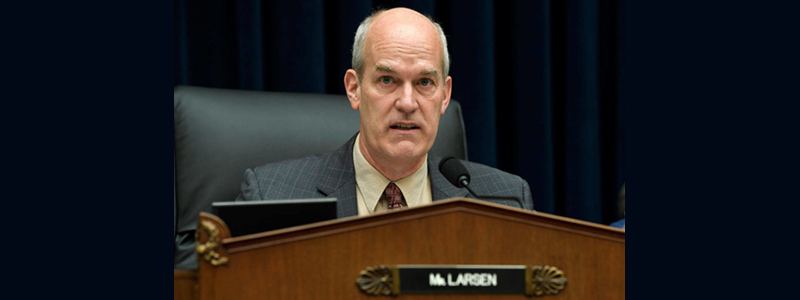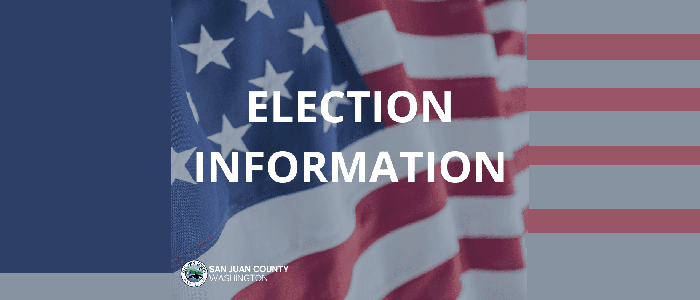||| FROM THE OFFICE OF REP. RICK LARSEN |||
WASHINGTON, D.C. – Today, Rep. Rick Larsen (WA-02), the lead Democrat on the Transportation & Infrastructure Committee, applauded House passage of the FAA Reauthorization Act of 2024, a bipartisan, bicameral bill to reauthorize the Federal Aviation Administration and aviation infrastructure and safety programs for five years. The bill now heads to the President’s desk to be signed into law.
“This bipartisan bill builds a safer, cleaner, greener and more accessible aviation system and creates more jobs here in Washington state,” said Larsen, a lead Democratic negotiator for the bill and former chair of the Aviation Subcommittee from 2019 to 2022. “This bill provides critical safety enhancements, grows Washington’s aviation workforce, invests in resilient infrastructure at Washington airports, sets clear priorities for advancing innovative aviation technologies being developed and produced in Northwest Washington, and provides robust consumer protections for the traveling public.
“The FAA Reauthorization Act is the result of months of good faith work between House and Senate committee leaders, and I look forward to President Biden signing the bill into law.”
Larsen Secures Funding for Washington Airports
The FAA Reauthorization Act includes several provisions that make bold, long-term investments in Washington airports (funding is per year for five years):
- $4 billion for the Airport Improvement Program (AIP), which provides grants for the planning and development of public-use airports. In 2023, Washington airports were awarded more than $94 million in AIP grants, including more than $15 million for infrastructure projects at airports in Washington’s Second District:
- $5.5 million for Paine Field in Everett to rehabilitate taxiway and apron and install perimeter fencing
- $5.3 million for Skagit Regional Airport in Burlington to install airfield guidance signs, reconstruct taxiway lighting, rehabilitate the taxiway and reconfigure the existing taxiway
- $2.2 million for Bellingham International Airport to acquire aircraft rescue and firefighting safety equipment, acquire snow removal equipment and modernize its snow removal equipment building
- A total of $1.6 million for Friday Harbor Airport to improve airport drainage and erosion control and conduct airport-related environmental assessment
- $330,000 for Lopez Island Airport to improve safety area, install an airport beacon and install weather reporting equipment
- $150,000 for Orcas Island Airport to update its airport master plan
- $100,000 for Anacortes Airport to improve airport drainage and erosion control
- A provision in the bill allows Seattle-Tacoma International Airport (Sea-Tac) to retain a public park on its property that the FAA required the airport to develop for aeronautical uses. The provision helps Sea-Tac avoid potentially up to $180 million in funding the airport would have owed the FAA.
- $350 million for airports to replace PFAS foam and equipment
- $200 million for airport runway safety and resiliency projects
- $150 million for airports to reduce noise and carbon emissions
Larsen Secures Funding to Grow and Diversify the Aviation Workforce
The FAA Reauthorization Act includes several provisions to build the next generation workforce (funding is per year for five years):
- $60 million for aviation workforce grants to build and grow the talent pipeline of pilots, aviation maintenance technical workers and aviation manufacturing workers. In 2022, Aviation Technical Services in Everett was awarded a $459,206 grant to support careers in aviation maintenance for graduating high school seniors through apprenticeship programs.
- Of the $60 million for aviation workforce grants, $12 million is dedicated for the Willa Brown Aviation Education Program to recruit, retain and advance underrepresented communities in the aviation industry.
Larsen Secures Funding to Foster Innovation
The FAA Reauthorization Act includes several provisions to foster innovation in aerospace in Northwest Washington and create more jobs:
- Supporting Hydrogen Production – The bill allows airports to use existing Airport Improvement Program (AIP) funding for hydrogen and unleaded fuel infrastructure. Larsen recently visited ZeroAvia’s new facility at Paine Field in Everett where the company is manufacturing zero-emission hydrogen-electric propulsion systems for commercial aircraft.
- Supporting Emerging Aviation Technologies – The bill establishes a Center for Advanced Aviation Technologies to support the testing and advancement of new and emerging aviation technologies like electric vertical take-off and landing (eVTOL). The bill would also require the comptroller general to conduct a study assessing the safe and scalable operation and integration of electric aircraft into the national airspace system. Larsen’s district is home to magniX, an electric propulsion system manufacturer leading the charge on the development of more sustainable and energy-efficient aircraft.
- Investing in Advanced Air Mobility – The bill requires the FAA to finalize rulemaking on the certification requirements, operating rules and pilot training for powered-lift advanced air mobility (AAM) aircraft. The bill also extends an FAA pilot grant program for state and local governments in Washington and across the country to plan for the deployment of AAM operations.
- Safe Integration of Drones into Airspace – The bill requires the FAA to establish regulations that would allow unmanned aircraft systems (UAS) to safely operate beyond visual line of sight (BVLOS), providing regulatory certainty to this innovative sector.
- Expanding UAS Use and Jobs – The bill establishes a grant program to support the use of UAS when inspecting, repairing or constructing critical infrastructure. The bill also funds workforce training for UAS careers.
Larsen Delivers Key Consumer and Workforce Protections
The FAA Reauthorization Act includes several provisions to improve the air travel experience and safety for consumers and the aviation workforce:
- Refunds for Cancelled or Significantly Delayed Flights – The bill requires airlines to refund passengers booked on flights that are subsequently cancelled, significantly delayed or changed. The bill also mandates that airlines notify passengers of their right to a refund and provides for the refund to be automatic.
- Improvements for Travelers with Disabilities – The bill directs USDOT to create a roadmap for airlines to reduce damage to wheelchairs and mobility aids and better accommodate wheelchairs onboard aircraft and requires airlines to refund passengers who book flights on planes that cannot accommodate their mobility devices. It also establishes a pilot initiative that allows AIP funds to be used to improve airport accessibility.
- $0 to Sit with Young Family Members – The bill requires airlines to allow passengers to sit next to their young child (up to age 12) whenever possible at no additional cost.
- 24/7 Live Customer Service – The bill requires air carriers to provide 24/7 access to live customer service agents.
- 65 Years Old for Pilot Retirement Age – The bill maintains the pilot retirement age of 65, aligning the United States with international standards and facilitating the development of the next generation of pilots.
- For a full list of consumer protections included in the bill, click here.
Additional Information
- For a full summary of provisions included in the bill, click here.
- For full bill text, click here.
- For video of Larsen’s House floor speech in support of the bill, click here.
**If you are reading theOrcasonian for free, thank your fellow islanders. If you would like to support theOrcasonian CLICK HERE to set your modestly-priced, voluntary subscription. Otherwise, no worries; we’re happy to share with you.**









Orcas Airport only got #150 K to “update” its Master Plan? We are not due to update our Master Plan for some years’ we just finished in 2020. What ‘updating’ does the FAA deem we need to do? Why not give money for our ongoing drainage issues, due to being atop a contiguous wetland with major deforestation going on up-slope? Please explain yourselves because when I read about this bill and what it does, I have so many questions, such as:
What powers these electric propulsion planes and drones? Will they be quieter? if so, how much quieter? Would vertical lift do away with the need to extend runway length in places like Orcas where you can’t extend it due to Eastsound being a UGA of clustered housing and businesses?
If lithium ion batteries will be used to power these, what is the life span of each battery? How are the batteries decommissioned? Where and how are the decommissioned batteries stored, and what pollution issues do they pose to the watersheds? What other metals are mined besides cobalt, and what effects do this mining have on the lands and waters used for the mining? since water is THE finite resource, what would be done to protect waters and waterways? Is there a safe way to store decommissioned lithium ion batteries and if they are toxic, for how long? What is being done to contain the toxicity and keep it out of the watersheds? What is the danger of fire or explosion with mass use of these batteries – has this been studied and tested? Where and how would batteries this big be charged? Where is the mining for these metals and chemicals being done? Are developing nations being exploited to satisfy our lust for consumerism – and what monetary compensation to the leaders of these countries can ever make up for permanently damaging their ecosystems? That’s just the tip of the iceberg in terms of questions.
Are the drones that will be servicing these be collecting any personal data from the Public without people’s consent? What kind of data woulf be collected? Who receives the data and how would it be used? Would these drones be used for any surveillance purposes? How many jobs would the drones take away vs how many, create? ETC
Which leads into:
These FAA perks are all well and good for those who can afford to fly somewhere, but many of us can’t afford to fly. All this money put into building, when at the same time, the government just let the ACP (Affordable Connectivity Program) die. Did you fight to keep it, Rep. Larson and our other Reps and senators? If not, why not?
The ACP provided an essential service to over 25 million families, many of them rural families with no other recourse. Senators and Representatives, did you fight for these families, rather than send more WarBucks and weapons to Ukraine and Israel?
Not to take the wind out of your wings, Rep. Larsen et al, but I would like my questions answered. The pandemic fallout of declining services and rapidly rising costs to consumers and families just trying to make ends meet did NOT end. Costs of living have risen exponentially for basic food and shelter – the essentials we all need. Add to that the push for all electric – expensive and no more sustainable in the long run than fossil fuels or nuclear energy. All have their downfalls and dark sides, as does ‘smart’ technology and forced technocracy and rural land grab. Our income didn’t rise to meet these inflated costs. Please address these questions.